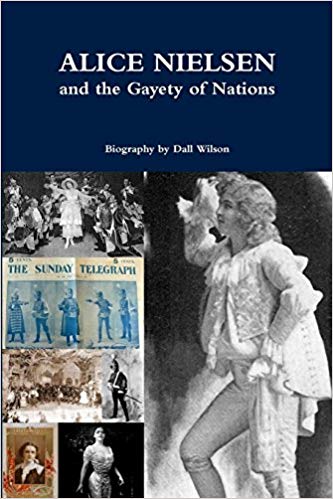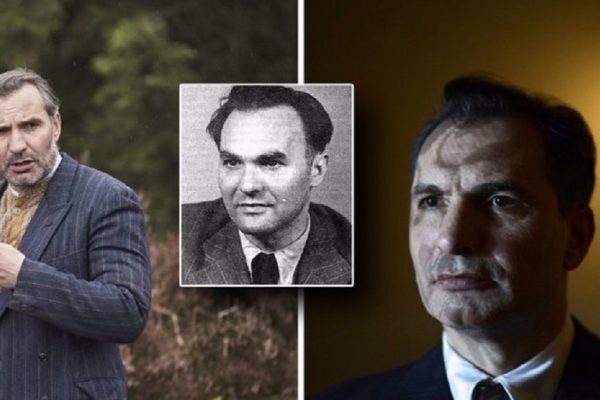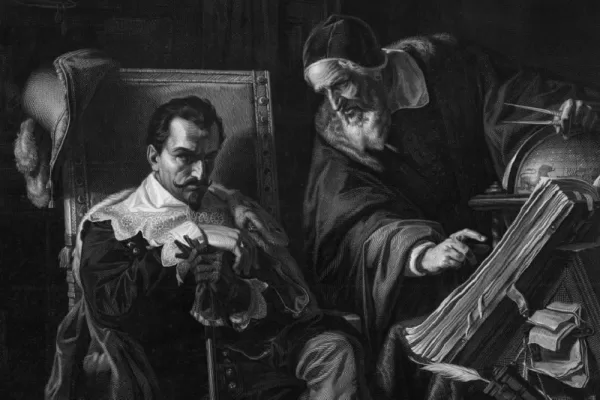“The family with Czech roots who popularized musical theatre, ran the Metropolitan Opera, and published insightful books on theatre were the Graus. Maurice Grau was the universally loved head of the Met, his brother toured North America producing repertory opera-musicals, and another brother wrote the books.” The quote came in the form of a comment on our site and prompted this post about Maurice Grau.
Maurice Grau was a Moravian-born American operatic impresario. He was born in Brunn (Brno) Moravia (now the Czech Republic, then part of Austria/Hungarian empire). He was the son of Emmanuel Grau and Rosalie (maiden name unknown).
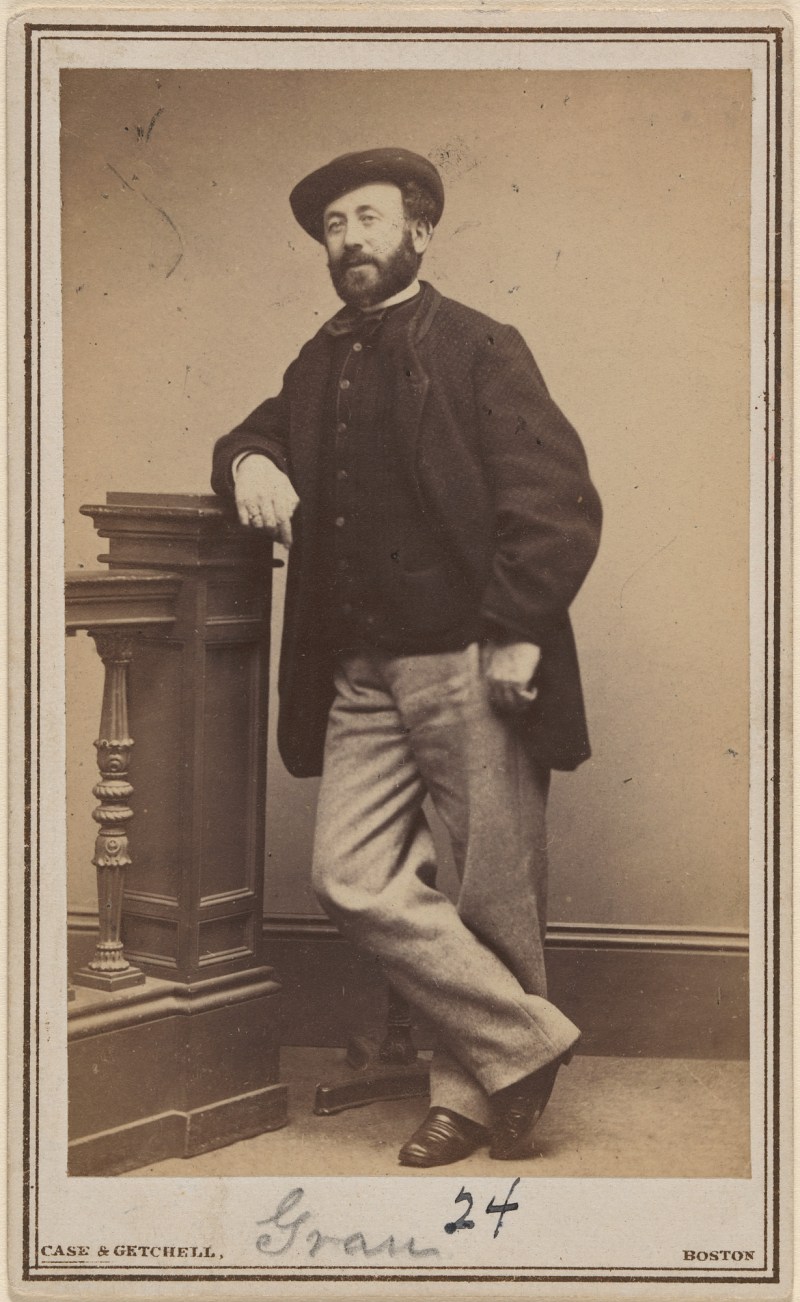
In about 1854, when Maurice was five years old, he immigrated with his parents to New York City, where they ran a boardinghouse and eventually Grau began working in the theatre for his uncle Jacob Grau
The first theatrical influence in the family was Maurice’s uncle, Jacob Grau who had trained as a doctor, but, because of ill health and “political complications” in Moravia, gave up his medical career when he emigrated to the U.S. at the age of 31. He surely fled because of the Revolutions of 1848.
(Side note: The Revolutions of 1848, known in some countries as the Spring of Nations, People’s Spring, Springtime of the Peoples, or the Year of Revolution, were a series of political upheavals throughout Europe in 1848. To date, it remains the most widespread revolutionary wave in European history.)
Working for his uncle Jacob while studying at the College of the City of New York, Maurice learned the theatre. Upon graduating in 1867, he enrolled at Columbia Law School. But, preferring his uncle’s profession, Grau left without graduating, instead holding “about every place that one can hold in the theatre, except on the stage.” He turned to artist management and subsequently organized the American tours of many celebrated artists.
Although best known for his successful tenure as head of the Metropolitan Opera, he was also important in the growth of popular musical theatre in America. And was the one responsible for contracting with very important artists at the time and bringing them to America.
His first solo venture was to bring to America the great French star of opéra bouffe, Marie Aimée. The success of her performances helped consolidate the vogue for opéra bouffe in particular and musical theatre in general.
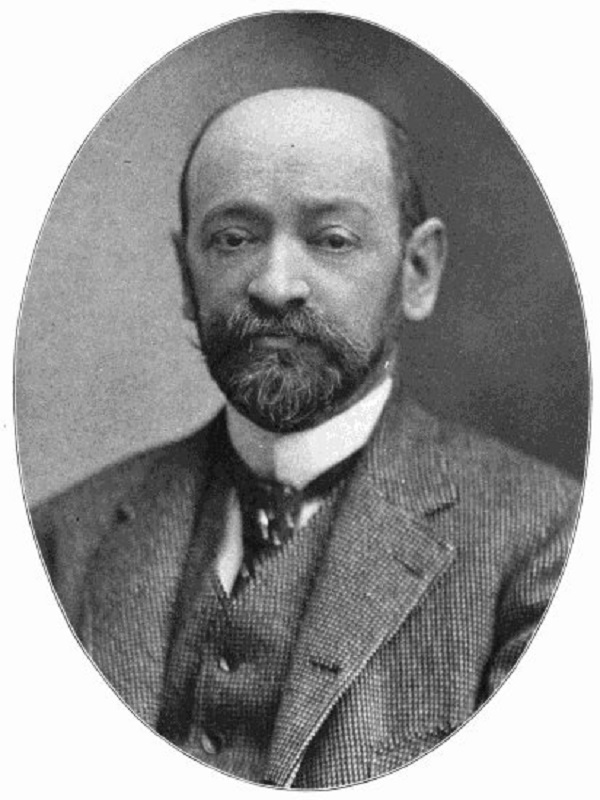
Opera, Operettas and Opéra Bouffe
Grau had been managing light opera companies for some time before striking out on his own with the Maurice Grau Opera Company, which in 1881 had given a five-week season at the Teatro Solis in Montevideo, Uruguay. With a Brazilian conductor named Gravenstein they presented a mix of grand opera and operettas: La traviata in French, Carmen, Donizetti’s La fille du régiment, Thomas’ Mignon, Victor Massé’s Paul et Virginie, Offenbach’s La Périchole and Lecocq’s Giroflé-Girofla.
Enrico Caruso
Late in 1899, Enrico Caruso had agreed with Maurice Grau to come to the Metropolitan at $200 a week for twenty weeks. There was a fifteen-day grace period. It stretched on into two months during which Mr. Grau disappeared. The impresario, it turned out, was at Karlsbad nursing the gout. He could not be reached. Caruso signed to return to St. Petersburg. “I’ve waited long enough,” he sputtered to Grau’s Italian agent. “I must have a new overcoat for the winter and some coal for my fireplace.”
The next contract was for fifty performances a season at $1,000 each–five years with annual increases. Before this contract could take effect, illness forced Grau’s retirement. To his successor, Heinrich Conried, fell the honor of presenting Enrico Caruso for the first time in the United States.
Sarah Bernhardt and Others
An extremely dynamic and energetic person, already at the age of twenty-three he had become one of the organizers of the American tour of Anton Rubinstein, and later he also brought Henryk Wieniawski and Sarah Bernhardt to America. Other greats of the day include: Helena Modjeska, Christina Nilsson, Henry Irving, Ellen Terry, Adelina Patti, Jacques Offenbach, Tommaso Salvini and Lillie Langtry, to name a few.
The Grau’s family had other members also involved in theatre management. This included Maurice’s brother Robert, two cousins, Jules and Matt, and a second uncle, Hermann.
The Stage in the Twentieth Century
Robert Grau (1854 – 1916) was Maurice Grau’s younger brother. He was the author of Forty Years Observation of Music and the Drama (1909); The Business Man in the Amusement World (1910), The Stage in the Twentieth Century (1912) and The Theatre of Science: A Volume of Progress and Achievement in the Motion Picture Industry (1914).
Maurice Grau had been managing light opera companies for some time before striking out on his own with the Maurice Grau Opera Company, which in 1881 had given a five-week season at the Teatro Solis in Montevideo, Uruguay. With a Brazilian conductor named Gravenstein they presented a mix of grand opera and operettas: La traviata in French, Carmen, Donizetti’s La fille du régiment, Thomas’ Mignon, Victor Massé’s Paul et Virginie, Offenbach’s La Périchole and Lecocq’s Giroflé-Girofla. The three men formed the company of Abbey, Schoeffel and Grau to present grand opera.
Maurice Grau was also a partner in the successful theatre management firm of Abbey, Schoeffel, and Grau.
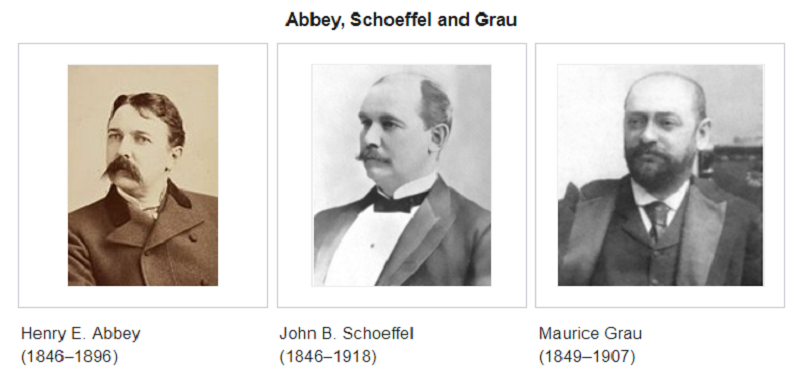
In 1890 they presented their own special season of Italian opera at the Metropolitan Opera in N.Y. with such stellar artists as Albani, Nordica, Patti, and Tamagno.
The Metropolitan Opera House
In 1891 their firm secured the lease of the Metropolitan Opera. Upon Abbey’s death in 1896, Grau took over the lease. After a hiatus (1897-98), Grau returned to run the Metropolitan Opera under the aegis of the Maurice Grau Opera Co. until 1903.
His astute understanding of public taste led him to engage the most famous singers of the day. He showcased their talents in the French and Italian, and later Wagnerian, repertory with notable artistic and financial success. From 1897 to 1900 he also managed London’s Covent Garden. In 1883.
Some of the history of Maurice Grau and his family is told in the book Alice Nielsen and the Gayety of Nations written by Dall Wilson (the commentator who brought Grau to my attention and prompted this post). I have read snippets of Ms. Wilson’s book and am looking forward to receiving my copy!
You can order your copy here.
But back to the team of Abbey, Schoeffel and Grau. Together they were a US theatre management and production firm, active from 1880 until 1896. The partners were Henry E. Abbey, John B. Schoeffel and Maurice Grau. Abbey and Schoeffel had been in partnership since 1876, and joined forces with Grau in 1882. They managed and ran a number of theatres in New York and Boston, including the Metropolitan Opera House (“the old Met”) in 1883-4 and from 1891–1896, when Abbey died.
The Metropolitan Opera was officially incorporated in 1880 by wealthy sponsors.
The MET’s inaugural season began on October 23, 1883 at its opera house at 39th and Broadway with a performance of Gounod’s Faust. The Metropolitan Opera history since has been studded with so many famous names and historic performances they surpass any short listing.
Although individual biographies may individually credit them with bringing various singing, instrumental and acting stars to the US, the overall credit can be shared by all three, acting as a successful partnership for some sixteen years.
In looking at the chronology of the Metropolitan, there are two gaps in its performing chronology, which of course also affect the Metropolitan Opera Orchestra. First is the season 1892 – 1893, when the Metropolitan did not perform due to a disastrous fire of August 27, 1892 that destroyed most of its building, and many instruments and association records.
The Metropolitan Opera was also closed during the 1897-1898 season. During that season, the Opera house was leased to Maurice Grau and hosted only visiting opera groups. Grau then took over full directorship in 1898, after which the Metropolitan flourished.
The Golden Age
With the re-opening of the Metropolitan Opera in 1893, the ‘Golden Age’ arrived under the direction of Maurice Grau, who took over management in October, 1891 and continued until 1903.
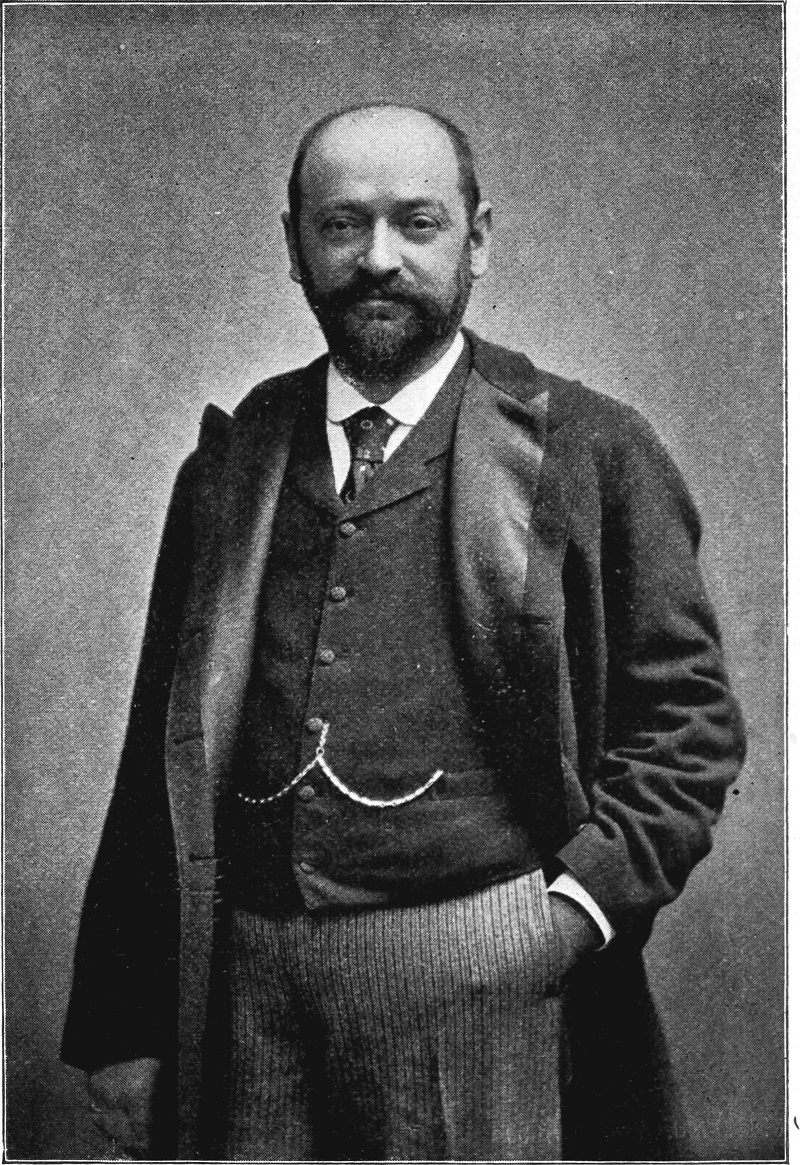
Maurice Grau died in Paris on March 14, 1907, of heart disease.
Sources: The Sun, Wikipedia, National Portrait Gallery, Archive Today, Maurice Grau at the Met, InfoPlease, Encyclopedia, American National Biography, WikiVisually, The Metropolitan Opera Archives, The New York Times and A history of the New York stage from the first performance in 1732 to 1901 by Brown, T. Allston.
A very special thanks to Dall Wilson.
Thank you for your support – We appreciate you more than you know!
We know that you could spend hours, days, weeks and months finding some of this information yourselves – but at this website, we curate the best of what we find for you and place it easily and conveniently into one place. Please take a moment today to recognize our efforts and make a donation towards the operational costs of this site – your support keeps the site alive and keeps us searching for the best of our heritage to bring to you.
Remember, we rely solely on your donations to keep the project going.
Thank you in advance!
If you have not already subscribed to get TresBohemes.com delivered to your inbox, please use the form below now so you never miss another post.

